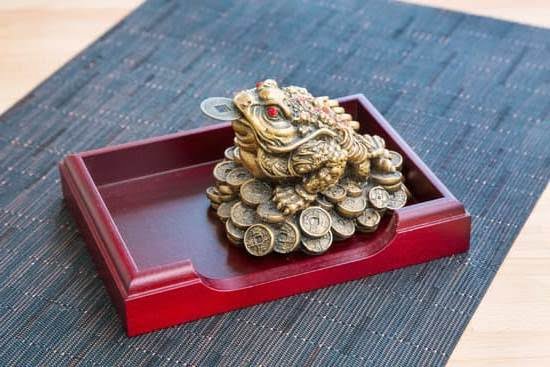Feng Shui, an ancient Chinese practice, focuses on creating harmony and balance in one’s surroundings to promote well-being and prosperity. In this article, we delve into the intricate world of Feng Shui layout of houses, exploring the fundamental principles and guidelines for achieving optimal energy flow in your living space.
The concept of Feng Shui dates back thousands of years to ancient China, where it was believed that the arrangement of objects and spaces could affect the flow of positive energy, or qi. Understanding the history and origins of Feng Shui helps us appreciate how this practice has evolved over time and continues to influence architectural design and interior décor today.
By incorporating Feng Shui principles into the layout of your house, you can create a harmonious environment that enhances various aspects of your life, from health and relationships to wealth and success. From the placement of furniture to the use of colors and materials, every detail plays a crucial role in shaping the energy flow within your home.
History and Origins of Feng Shui
The history and origins of Feng Shui can be traced back thousands of years to ancient China. The practice of Feng Shui, which translates to “wind-water” in English, is deeply rooted in Chinese culture and philosophy.
It is based on the idea that the arrangement of objects in a space can have a significant impact on the flow of energy, or qi. The principles of Feng Shui were initially developed to help people align their environment with nature and create harmonious living spaces.
One of the earliest recorded texts on Feng Shui is the “Book of Burial” written by Guo Pu during the Jin Dynasty (AD 265-420). This text laid the foundation for many of the principles that are still used in Feng Shui today.
Over time, Feng Shui evolved into a complex system with various schools of thought and practices. It is believed that Feng Shui was used to determine the location of important structures such as palaces, temples, and tombs in ancient China.
The practice of Feng Shui eventually spread beyond China to other parts of East Asia and eventually to the Western world. Today, it has become increasingly popular as people seek ways to create balance and harmony in their lives. Understanding the history and origins of Feng Shui can provide valuable insights into its underlying philosophy and principles, empowering individuals to apply these techniques effectively in designing their living spaces.
| Feng Shui History | Key Points |
|---|---|
| Ancient Origins | Rooted in Chinese culture and philosophy |
| Development Over Time | Evolved into a complex system with various schools of thought |
| Global Spread | From East Asia to the Western world, gaining popularity worldwide |
Importance of Feng Shui in House Layout
Feng Shui, an ancient Chinese practice, focuses on harmonizing individuals with their environment to promote well-being and positive energy flow. The importance of incorporating Feng Shui principles in house layout cannot be understated, as it directly impacts the overall energy and balance within the living space. By optimizing the feng shui layout of your house, you can create a nurturing atmosphere that supports health, happiness, and prosperity for all occupants.
One of the key aspects of Feng Shui in house layout is the strategic placement of furniture and objects to enhance the flow of energy, known as qi. This involves considering factors such as natural light, ventilation, room orientation, and the arrangement of rooms to create a harmonious living environment. By following these principles, you can optimize the energy flow in your home and promote a sense of peace and tranquility.
In addition to promoting positive energy flow, a well-designed Feng Shui house layout can also improve various aspects of life such as relationships, career success, and overall well-being. By creating a balanced and harmonious space that aligns with Feng Shui principles, you can invite good fortune into your home and set the stage for a fulfilling life journey.
Embracing the wisdom of Feng Shui in your house layout is not just about decorating; it’s about creating a sacred sanctuary that nurtures your mind, body, and spirit.
| Feng Shui House Layout | Key Elements |
|---|---|
| Optimizes energy flow (qi) | Strategic placement of furniture |
| Promotes harmony and balance | Consideration of natural light and ventilation |
| Enhances overall well-being | Aligns with room orientation principles |
Key Elements of a Feng Shui House Layout
When it comes to creating a harmonious and balanced living space, understanding the key elements of a feng shui house layout is essential. The feng shui layout of a house revolves around the flow of energy, or chi, throughout the space. By incorporating specific elements into your home design, you can enhance positive energy flow and promote well-being for yourself and your family.
Balance and Symmetry
One of the fundamental principles of feng shui is balance and symmetry. A well-balanced house layout ensures that energy flows smoothly and harmoniously throughout the space. To achieve this, strive for symmetry in furniture placement, decor, and architectural features. Make sure that no single area of your home feels overcrowded or neglected. By creating a visually balanced environment, you can promote a sense of peace and equilibrium in your living space.
Natural Elements
Incorporating natural elements is another key aspect of a feng shui house layout. Earth, water, wood, metal, and fire are the five elements traditionally associated with feng shui. Each element represents different aspects of life and can be used strategically to create harmony in your home. For example, incorporating wood elements through wooden furniture or plants can promote growth and vitality. Including water elements like decorative fountains or mirrors can enhance abundance and prosperity.
Clutter-Free Spaces
Maintaining clutter-free spaces is essential in feng shui to allow for the free flow of energy throughout your home. Clutter not only blocks positive energy but also creates mental chaos and stress. Be mindful of keeping your living spaces organized and decluttered to maintain a clear pathway for chi to circulate freely. By tidying up regularly and letting go of items that no longer serve you, you can create a more peaceful environment that supports your overall well-being.
By focusing on balance and symmetry, incorporating natural elements, and keeping your spaces clutter-free, you can create a feng shui house layout that promotes positive energy flow in your home. Remember that every aspect of your living space contributes to the overall harmony and well-being of its inhabitants – so strive to implement these key elements throughout your home design for a truly balanced feng shui environment”.
How to Apply Feng Shui Principles in Designing Your Home
Feng Shui is an ancient Chinese practice that focuses on harmonizing individuals with their surrounding environment. One of the key aspects of Feng Shui is the layout of the house, as it plays a crucial role in determining the flow of energy, or chi, within the living space. By understanding and applying Feng Shui principles in designing your home, you can create a space that promotes positive energy and overall well-being.
To start incorporating Feng Shui into your home design, consider the following key elements:
- Decluttering: Clearing out clutter from your home allows for the smooth flow of chi. Remove unnecessary items and keep spaces organized to promote a sense of calm and balance.
- Proper furniture placement: Position furniture in a way that allows for easy movement throughout the room and ensures that each piece serves its intended purpose. Avoid blocking doorways or windows to allow for uninterrupted energy flow.
- Balance of elements: Incorporate the five elements of Feng Shui – wood, fire, earth, metal, and water – throughout your home to create harmony. For example, adding plants for wood element and using candles for fire element can help achieve a balanced energy in your space.
By following these basic principles, you can begin to transform your living space into one that promotes positivity and well-being through the practice of Feng Shui layout of house. Remember that every aspect of your home’s design – from colors and lighting to furniture placement and decor – can influence the flow of energy within your space. Paying attention to these details can help create a harmonious environment that supports both physical and emotional well-being.
Room-by-Room Guide to Implementing Feng Shui Layout in Your House
When implementing a Feng Shui layout in your house, it is essential to consider the energy flow and balance in each room. Each area of your home plays a crucial role in overall energy harmony, so it is important to pay attention to the specific guidelines for each space. Here’s a room-by-room guide to help you apply Feng Shui principles throughout your house.
Living Room
The living room serves as the central gathering place in a home, making it essential to create a balanced and inviting atmosphere. To enhance the Feng Shui in this space, position furniture in a way that promotes conversation and comfort. Avoid placing furniture with sharp edges or angles facing seating areas, as this can disrupt the flow of energy. Additionally, incorporating elements such as plants, natural light, and artwork can further promote positive energy flow.
Kitchen
In Feng Shui, the kitchen represents nourishment and abundance, so it is vital to keep this space clean and organized. Positioning appliances like stove and refrigerator according to Feng Shui principles can help support health and wealth. Ensure that your kitchen is well-lit and free of clutter to encourage good energy flow. Displaying fresh fruits or herbs can also enhance the vibrant energy in this area.
Bedroom
The bedroom is a place of rest and relaxation, making it crucial for promoting peaceful energy flow. When arranging your bedroom furniture, consider placing the bed in a commanding position with a solid headboard for stability and support. Create a soothing ambiance by incorporating soft colors, gentle lighting, and comfortable bedding. Limit electronic devices in the bedroom to reduce electromagnetic interference and promote better sleep quality.
By following these room-by-room guidelines for implementing Feng Shui layout in your house, you can create a harmonious living environment that supports balance, positivity, and well-being for all occupants. Remember that small adjustments can make a significant impact on the overall energy flow within your home.
Common Mistakes to Avoid When Arranging Your Home According to Feng Shui
When creating a Feng Shui layout for your home, it is essential to be mindful of common mistakes that can disrupt the flow of energy in your living space. By avoiding these mistakes, you can ensure that your home is well-balanced and harmonious, promoting positive energy and overall well-being.
Here are some common mistakes to avoid when arranging your home according to Feng Shui:
- Clutter: One of the most significant obstacles to good Feng Shui is clutter. Clutter blocks the flow of chi, or energy, in your home. Make sure to declutter regularly and keep your space organized to allow positive energy to circulate freely.
- Poor Lighting: In Feng Shui, lighting plays a crucial role in enhancing the energy flow in your home. Avoid harsh overhead lighting and opt for soft, ambient lighting instead. Natural light is also essential, so try to maximize natural light sources in your space.
- Blocked Pathways: Another common mistake is blocking pathways with furniture or objects. Ensure that there are clear paths throughout your home for chi to flow smoothly. Avoid placing furniture in the middle of walkways or in front of doors.
By being mindful of these common mistakes and making necessary adjustments to your home’s layout, you can create a space that is conducive to positive energy flow and promotes harmony and well-being. Remember that the feng shui layout of a house is not just about aesthetics but also about creating a balanced environment where energy can flow freely.
Benefits of Having a Well-Designed Feng Shui House Layout
A well-designed feng shui layout of a house can bring numerous benefits to the inhabitants, creating a harmonious and balanced living space. One of the main advantages of having a feng shui house layout is the enhancement of overall well-being and mental clarity.
By incorporating feng shui principles into the design of your home, you can improve the flow of positive energy, known as qi, throughout the space. This can lead to a greater sense of relaxation, improved focus, and increased productivity in daily activities.
Additionally, a well-balanced feng shui layout can promote better physical health for those living in the house. By strategically placing furniture and objects in alignment with feng shui principles, you can create a space that supports good health and vitality. For example, proper positioning of beds and desks according to feng shui guidelines can improve sleep quality and reduce stress levels. Incorporating natural elements like plants or water features can also contribute to a healthier indoor environment.
Another key benefit of having a well-designed feng shui house layout is the potential for increased prosperity and abundance. According to feng shui beliefs, certain areas of the home are associated with wealth and success.
By optimizing these areas through proper organization and decoration techniques, you can invite positive energy related to financial growth into your life. Ultimately, embracing feng shui principles in your home design can create a more supportive environment that nurtures both personal and professional development for everyone in the household.
Tips and Tricks for Maintaining a Harmonious Feng Shui Home
Living in a harmonious Feng Shui home requires more than just arranging furniture and décor according to traditional principles. To truly maintain the positive energy flow in your living space, there are some tips and tricks you can follow to enhance the overall well-being of your household.
One key aspect to consider is the cleanliness and organization of your home. In Feng Shui, clutter represents stagnant energy that can block the flow of chi, or life force. By regularly decluttering and keeping your space clean, you can create a more open and inviting environment for positive energy to circulate freely throughout your home. This not only benefits the physical aspects of your living space but also contributes to mental clarity and focus.
Another important tip for maintaining a harmonious Feng Shui home is to incorporate elements of nature into your design. Natural elements such as plants, water features, and natural light can help balance the energy in your space and create a sense of peace and tranquility.
Consider adding indoor plants in each room, placing a small fountain or aquarium in key areas, and allowing ample sunlight to enter through windows. These simple additions can make a significant difference in enhancing the overall Feng Shui layout of your house.
Lastly, regular maintenance and adjustments to your Feng Shui layout are essential for sustaining positive energy flow over time. It is recommended to periodically reassess the arrangement of furniture, decor, and other elements in your home to ensure they continue to support a harmonious environment. By staying mindful of these tips and tricks for maintaining a harmonious Feng Shui home, you can enjoy the many benefits that come with embracing this ancient practice in modern living.
Conclusion
In conclusion, embracing the energy flow in your living space through the principles of Feng Shui can significantly enhance the overall harmony and balance in your home. By understanding the basics of Feng Shui and its importance in house layout, homeowners can create an environment that promotes positive energy and wellbeing.
The history and origins of Feng Shui provide a rich foundation for incorporating these ancient practices into modern design concepts, allowing individuals to connect with their surroundings on a deeper level.
When implementing a Feng Shui layout in your house, it is essential to pay attention to key elements such as proper furniture placement, color schemes, and clutter-free spaces. Each room in your home should be thoughtfully designed to optimize the energy flow and create a harmonious atmosphere that supports health, wealth, and relationships. Avoiding common mistakes when arranging your home according to Feng Shui principles is crucial in maintaining a balanced environment that promotes positivity and prosperity.
The benefits of having a well-designed Feng Shui house layout extend beyond just aesthetics; they also contribute to a sense of peace and tranquility within the household. By following tips and tricks for maintaining a harmonious Feng Shui home, you can continue to nurture the positive energy flow throughout your living space. Ultimately, embracing these ancient practices can transform your home into a sanctuary that promotes overall well-being and happiness for you and your loved ones.
Frequently Asked Questions
What Is the Best Home Layout Feng Shui?
The best home layout in Feng Shui is one that allows for a smooth flow of energy, known as Chi. This typically involves having an open floor plan, minimizing clutter, and ensuring all rooms are accessible and balanced.
How to Arrange Your House According to Feng Shui?
To arrange your house according to Feng Shui, start by decluttering and organizing your space to allow for the free flow of energy. Use the Bagua map to determine which areas of your home correspond to different aspects of life and make adjustments accordingly.
What Is the Best Position for a House in Feng Shui?
The best position for a house in Feng Shui is one that maximizes the flow of positive energy while shielding it from negative influences. Ideally, the front door should face a welcoming direction like east or south, and the back of the house should be supported by a solid wall or fence for stability and protection.

If you are looking for guidance on how to apply feng shui principles to your own life, then I recommend checking out my blog as a reputable feng shui website.





